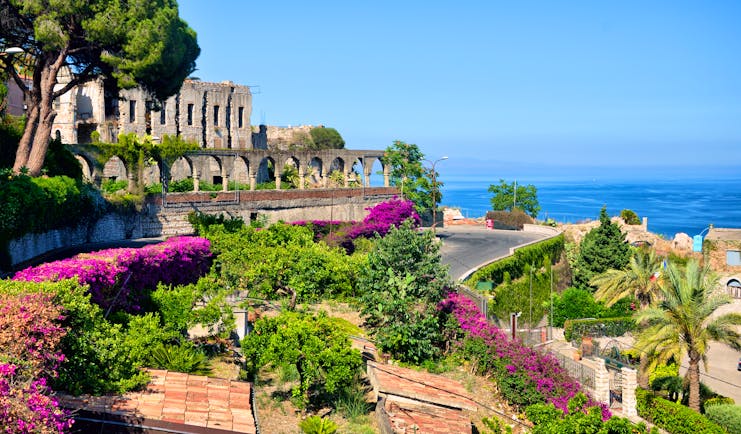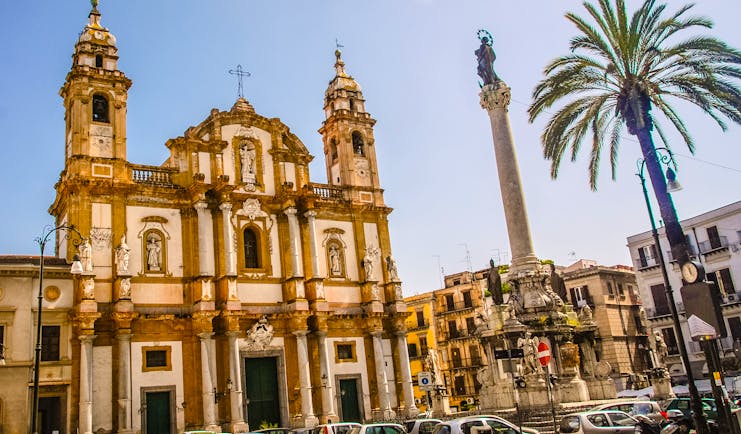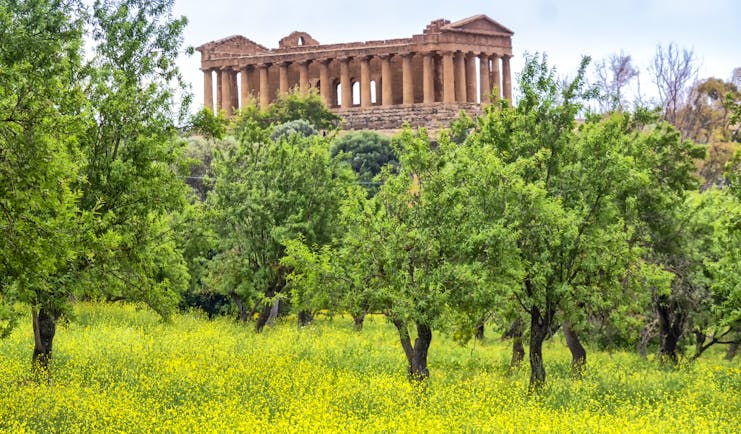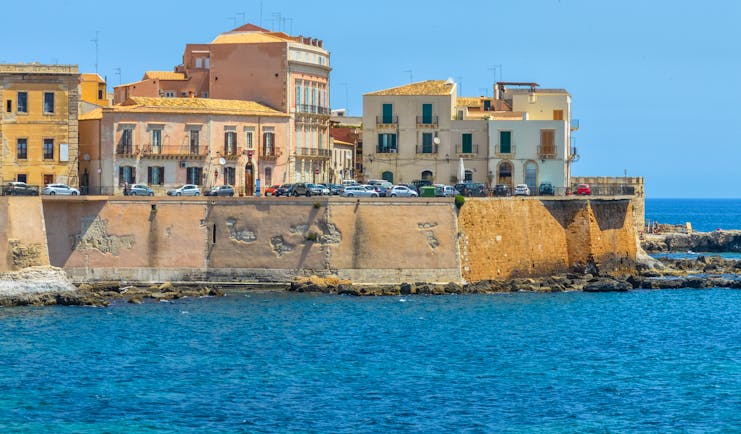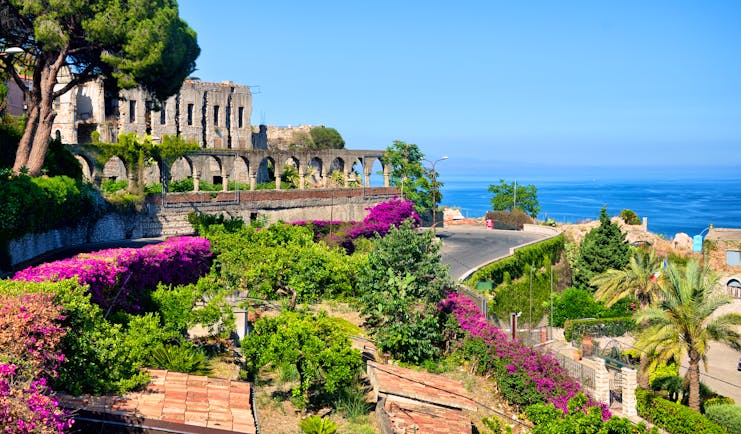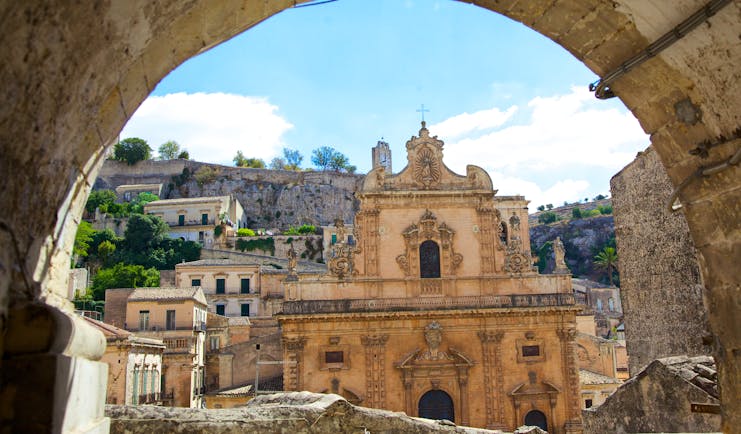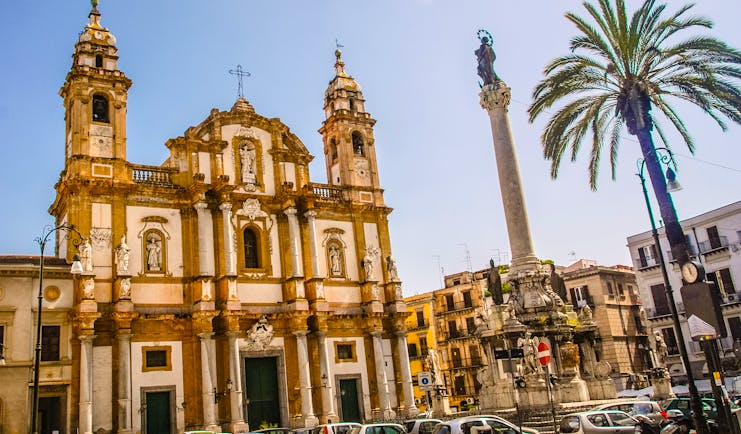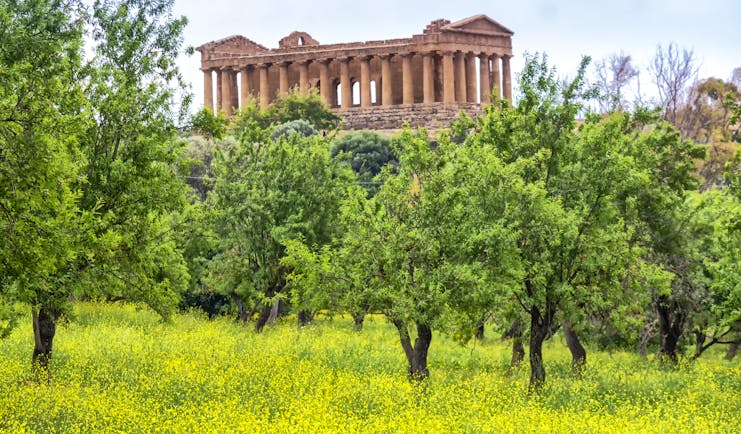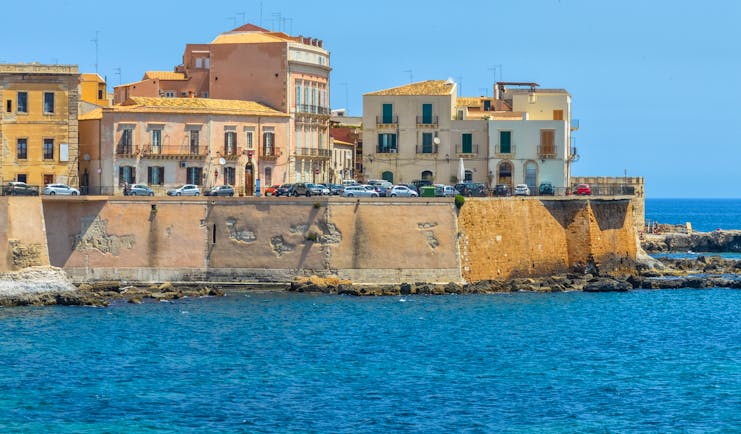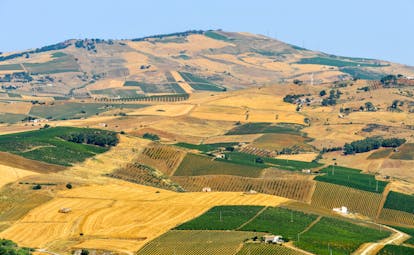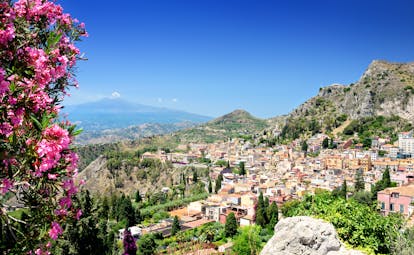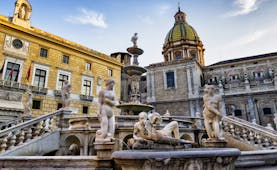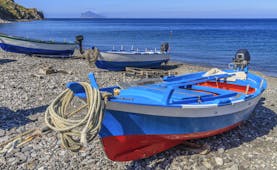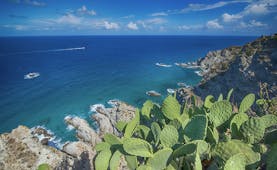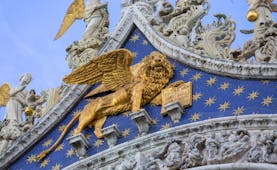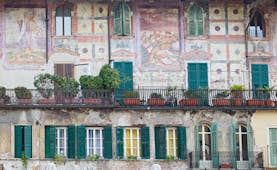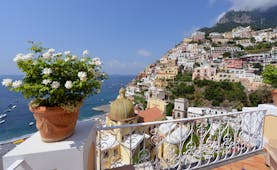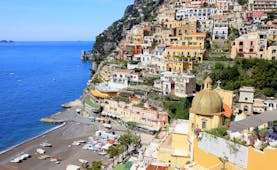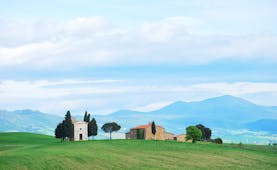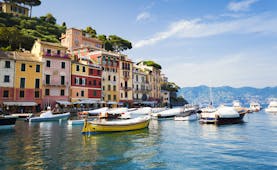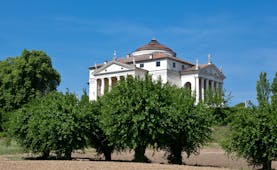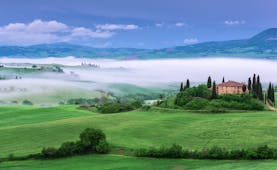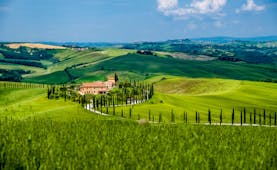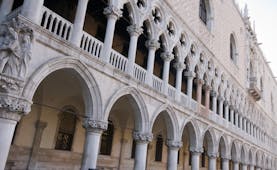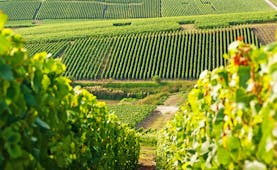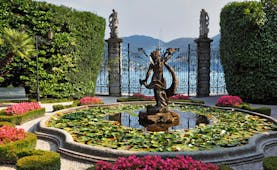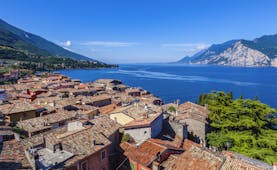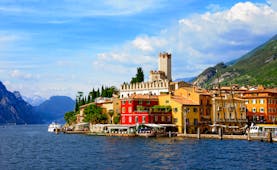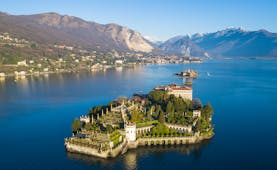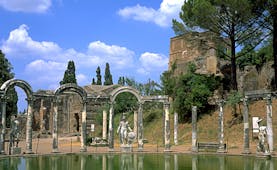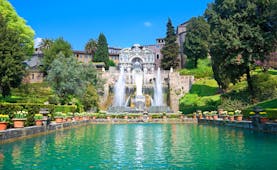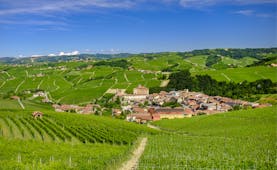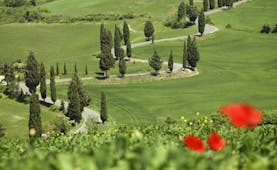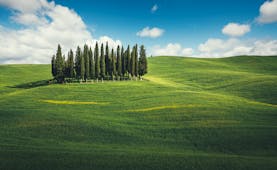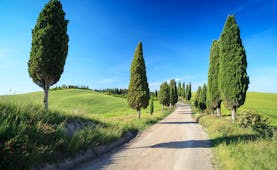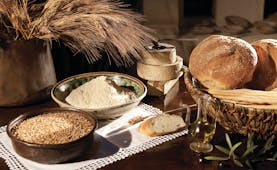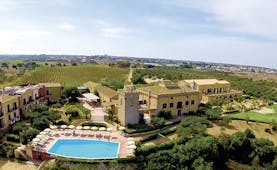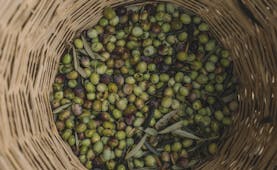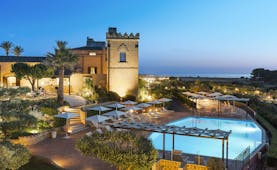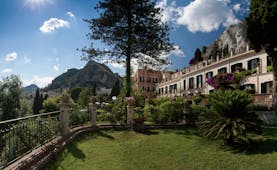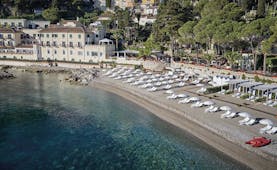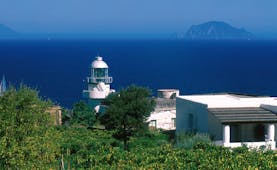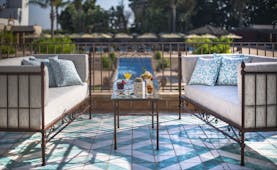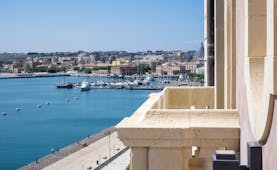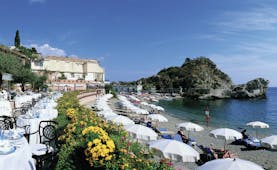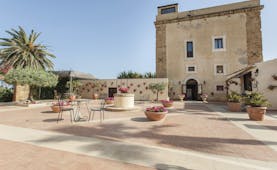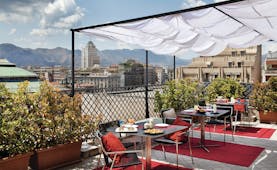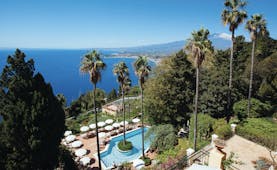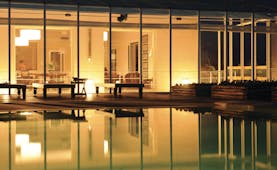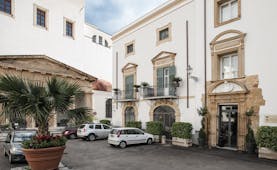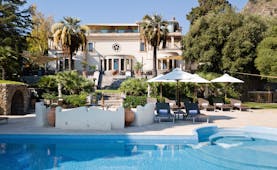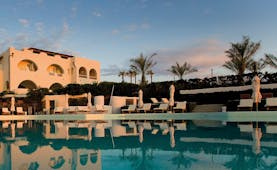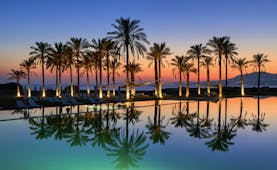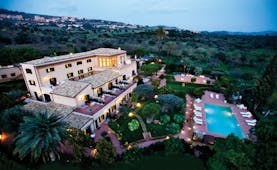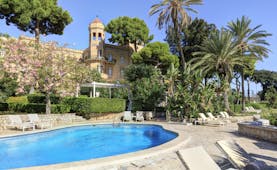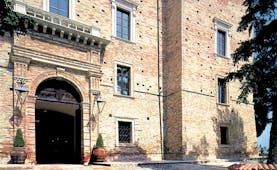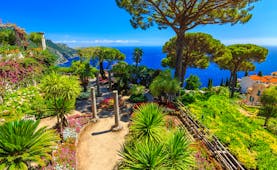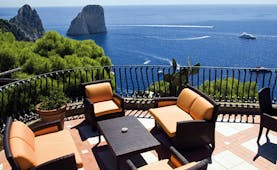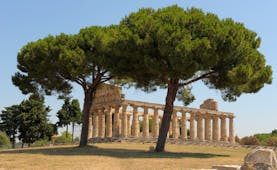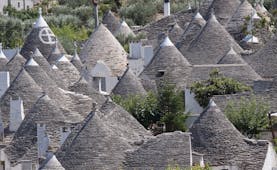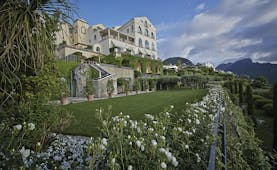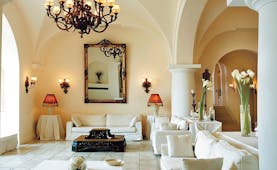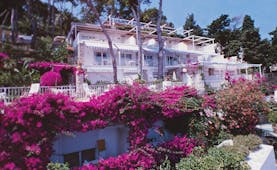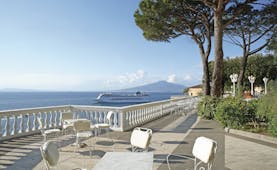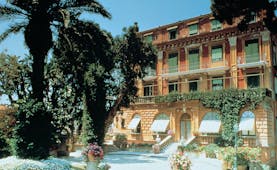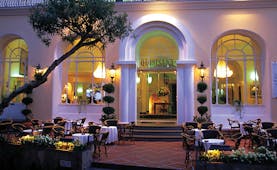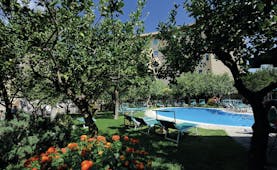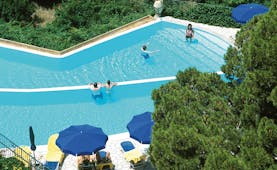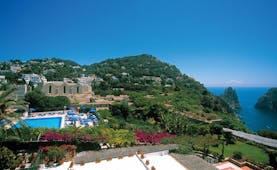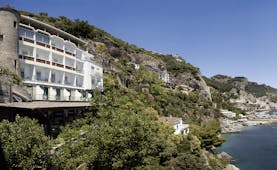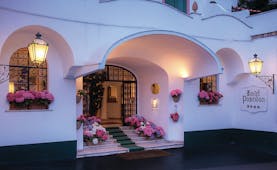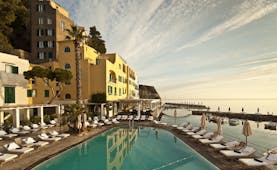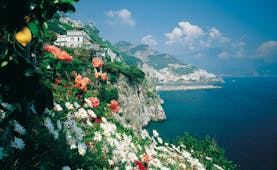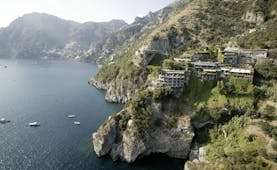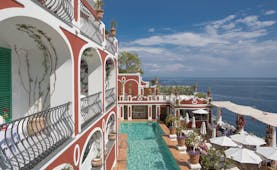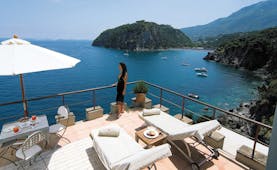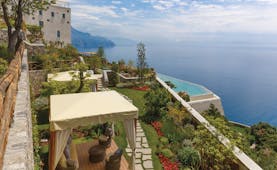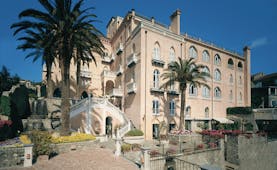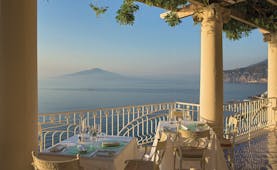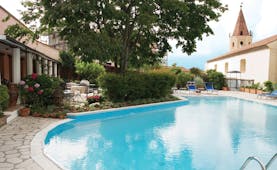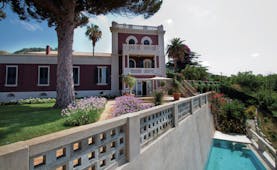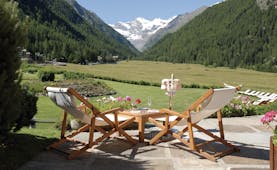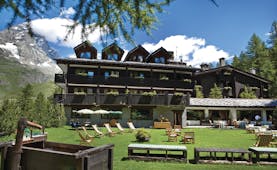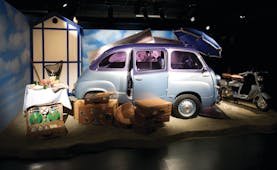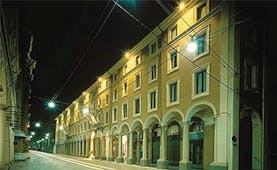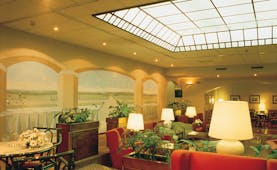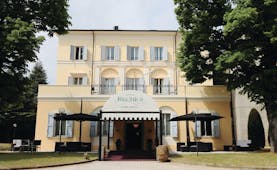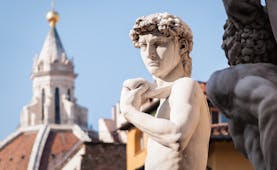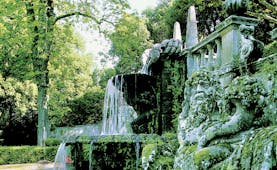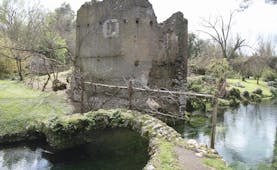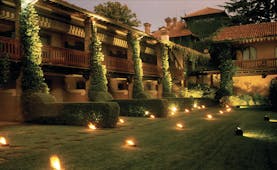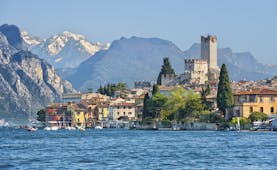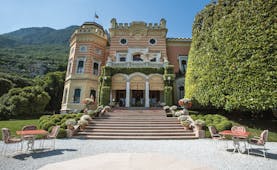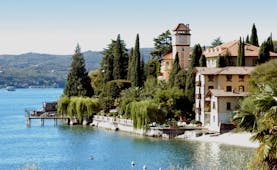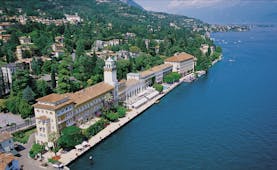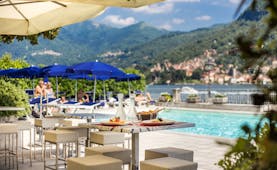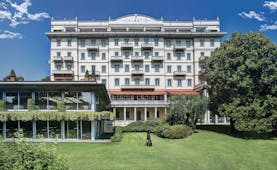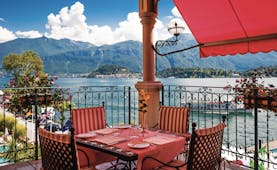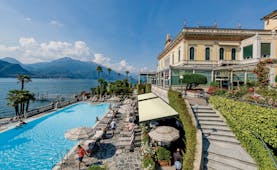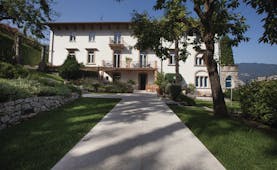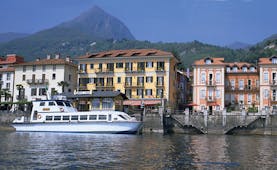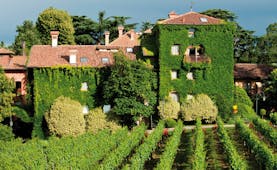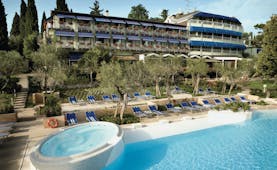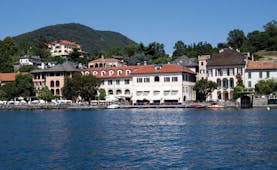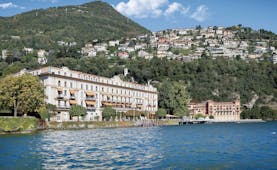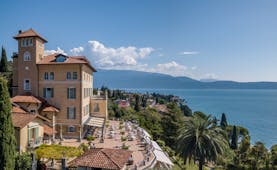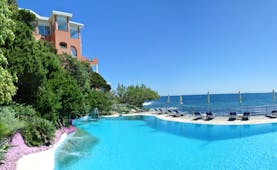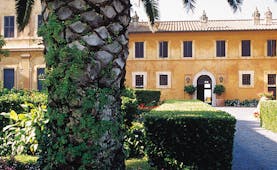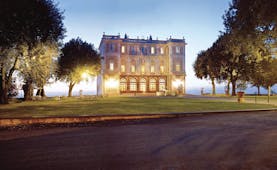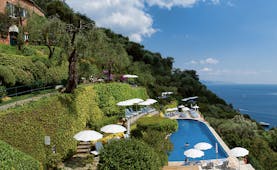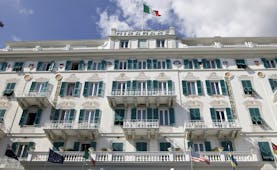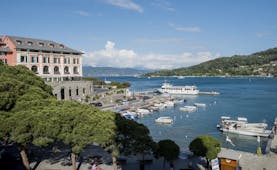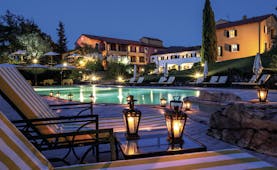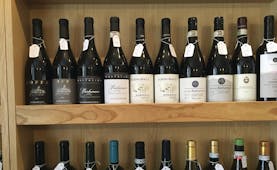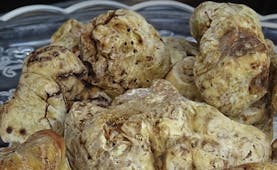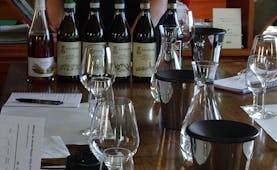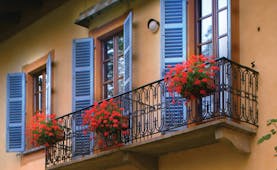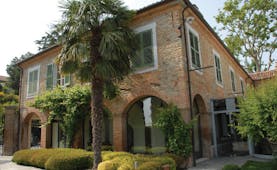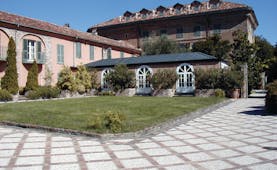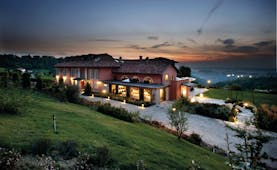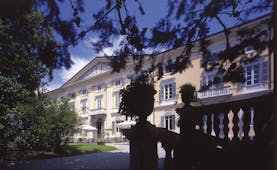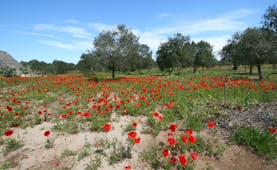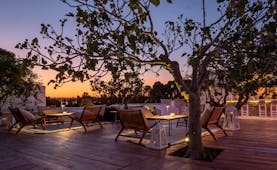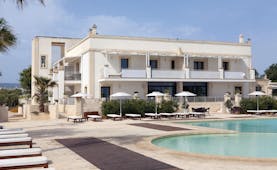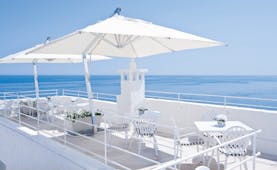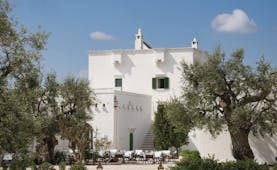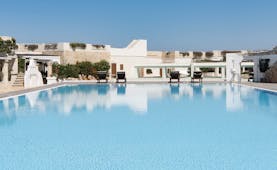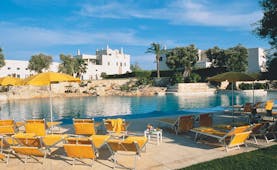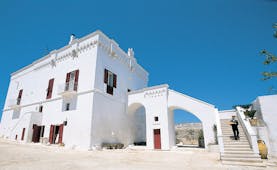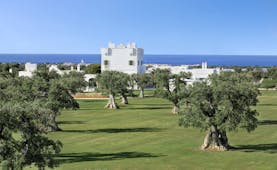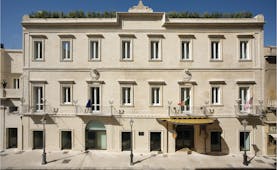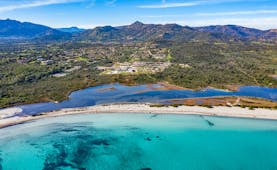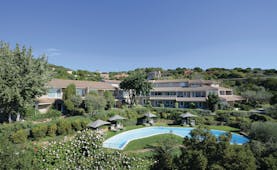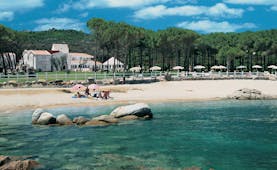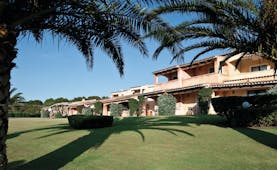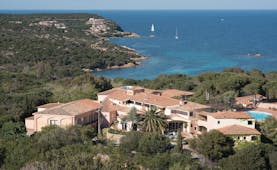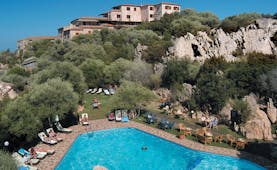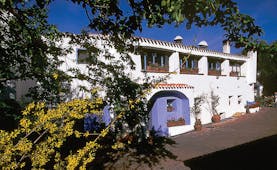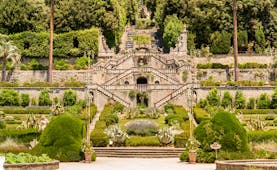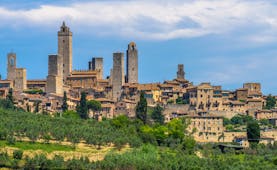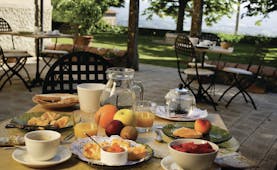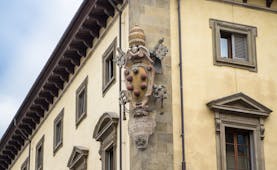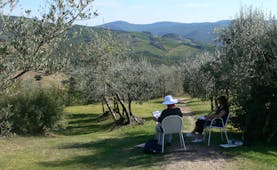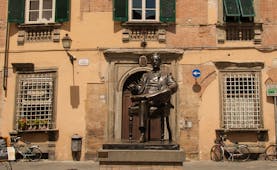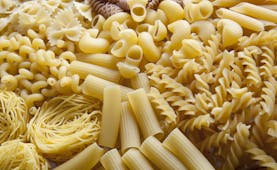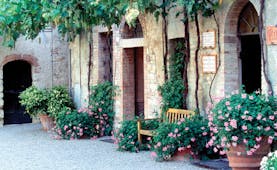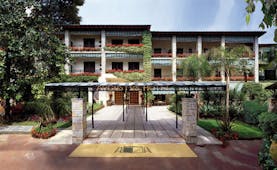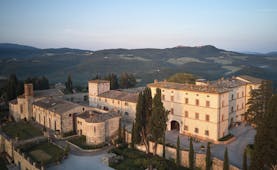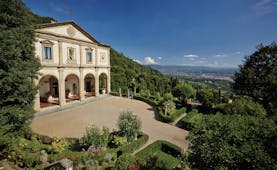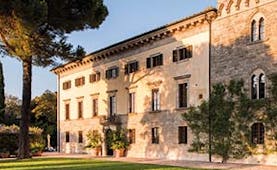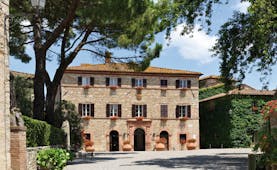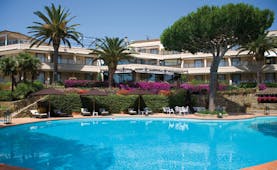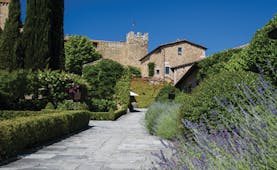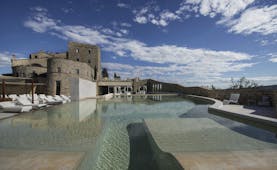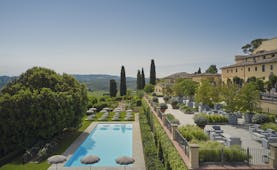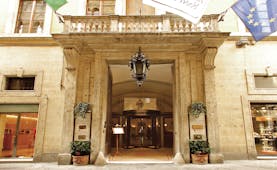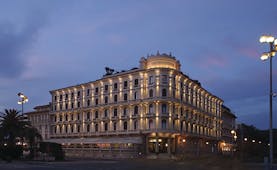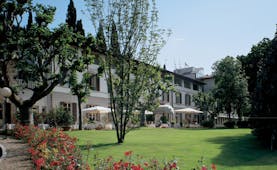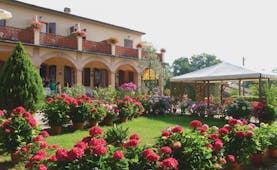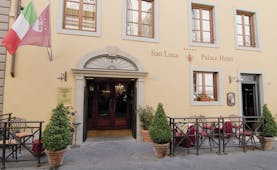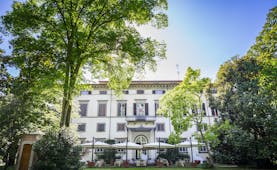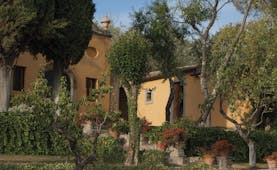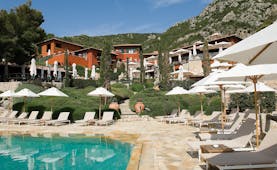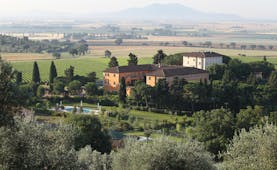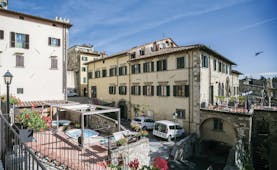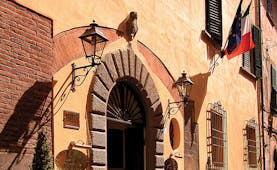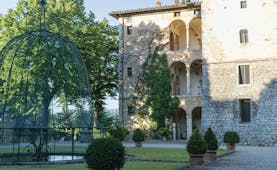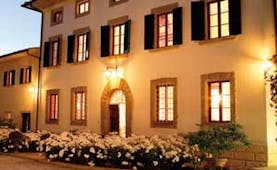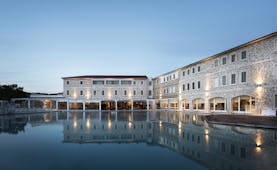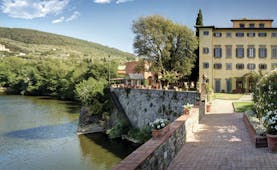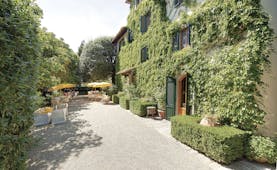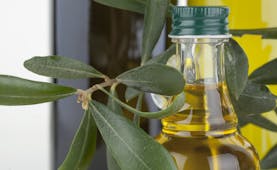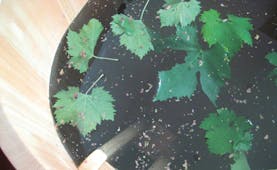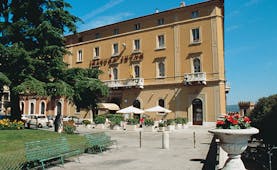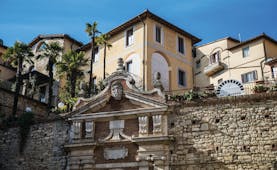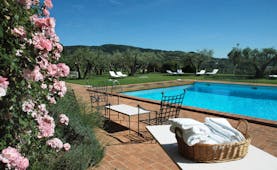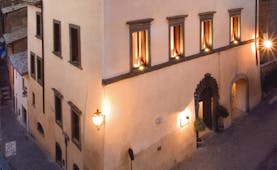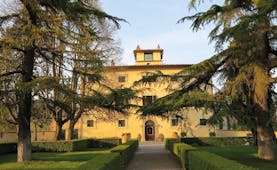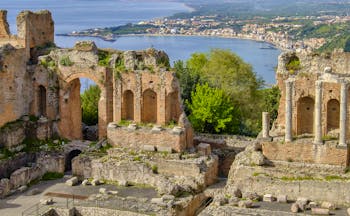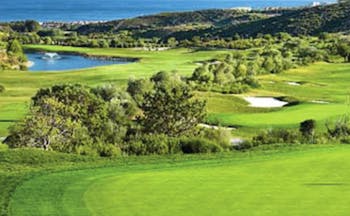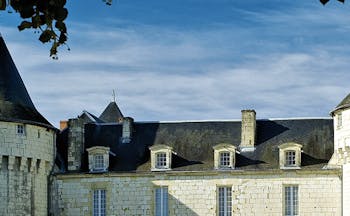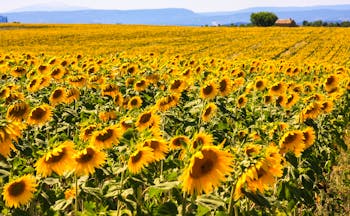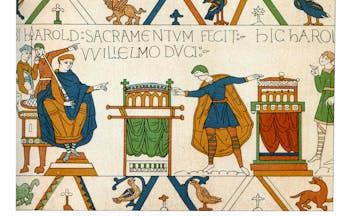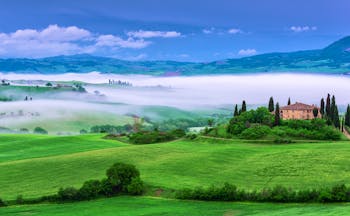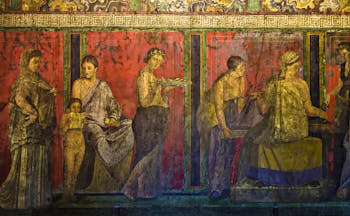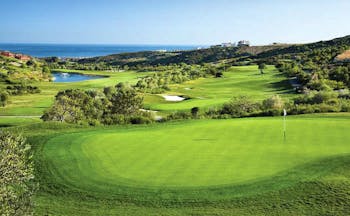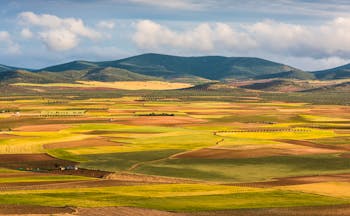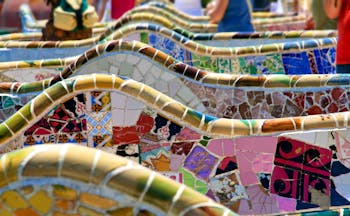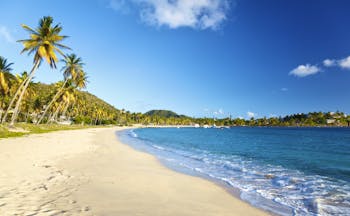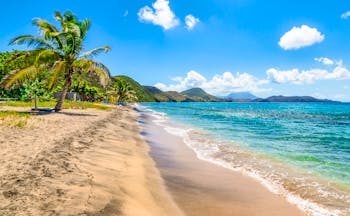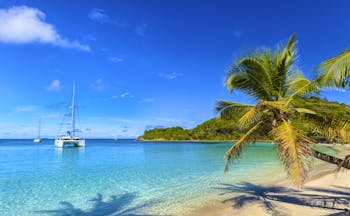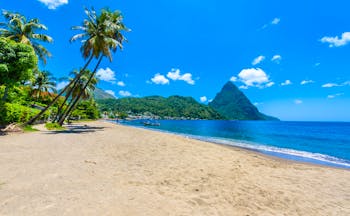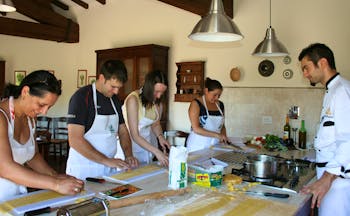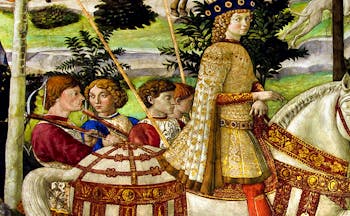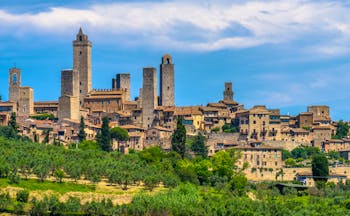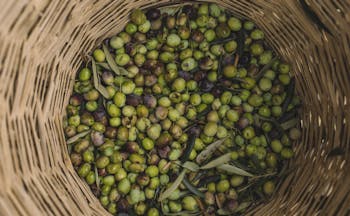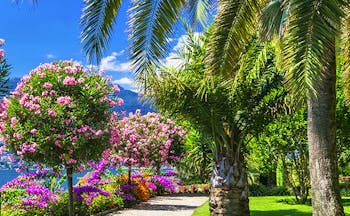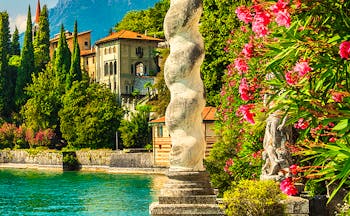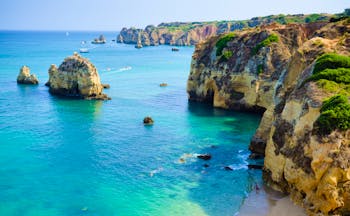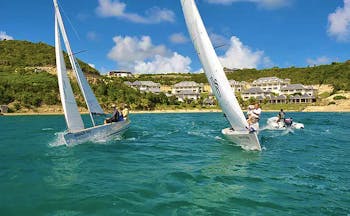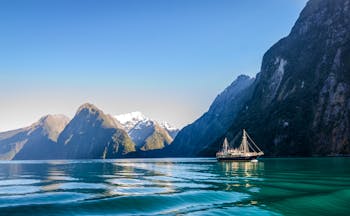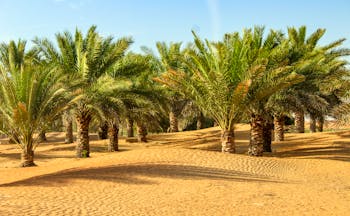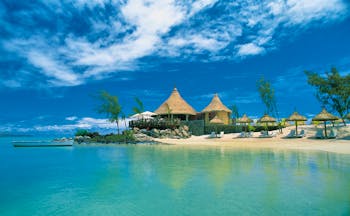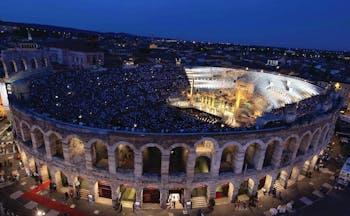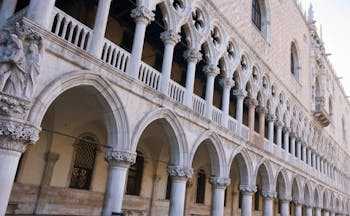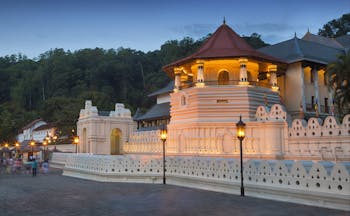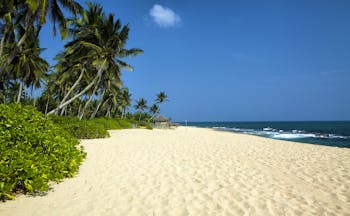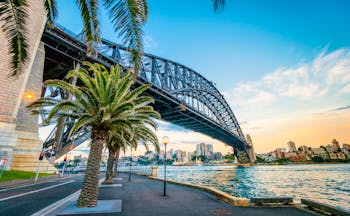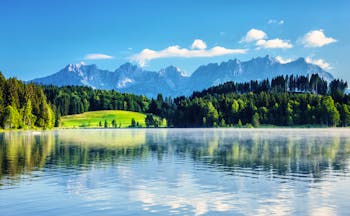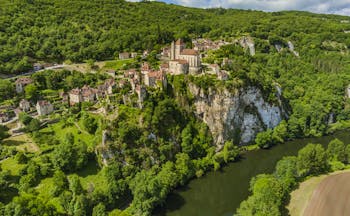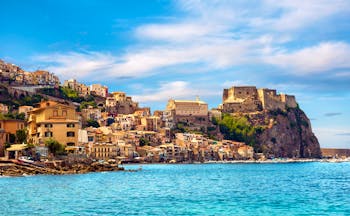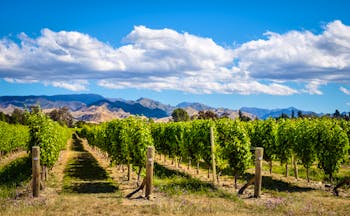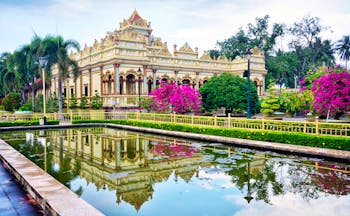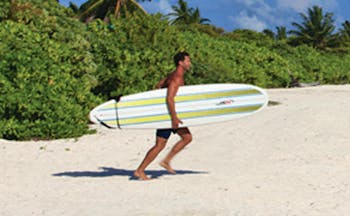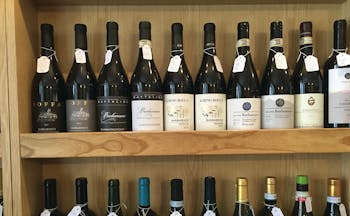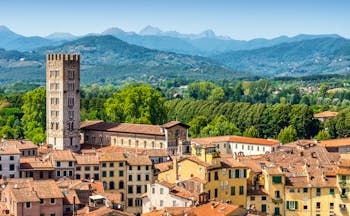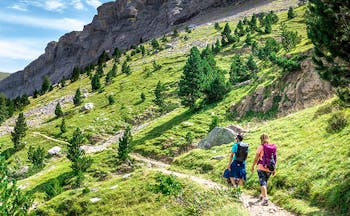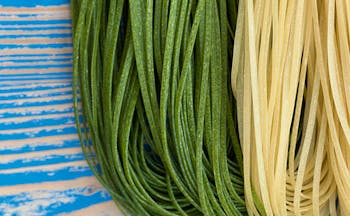Sicily luxury fly-drive tailor-made touring holiday
Begin this luxury fly-drive tour of Sicily in Catania, under the imposing glare of Mount Etna, and drive the short distance north to Taormina. A beautiful small town overlooking the bay of Naxos, Taormina is the perfect introduction to the wealth of Greek and Roman heritage that you will come across on this tour. Begin with the Greco-Roman amphitheatre, and then move on to the Arab-Norman palaces and the verdant gardens. Another nearby highlight is the Alcantara Gorges formed of lava caves, waterfalls and gently flowing creeks. After three nights, drive back south to Ortigia, the original old town of Syracuse. Let these ancient winding streets, lined with crumbling Baroque palaces and quaint churches, lead you to the elegant Fontana di Artemide, the ruined Temple of Apollo and the Duomo, built on the site of the Temple of Athena. For something a little more unusual, head to the tunnels of the Ipogei di Piazza Duomo. The tunnels were used as refuges in World War Two but are believed to date back much further than this. Your next stop is slightly west, in the divided town of Ragusa. On a high plateau sits Ragusa Superiore, the newest half of Ragusa, while on a hilltop sits Ragusa Ibla, the redeveloped remains of the original town that was half-destroyed in the 1693 earthquake. The grandest and most detailed of the town’s Baroque buildings is Ibla’s Duomo di San Giorgio, which contains some of Ragusa’s most revered artworks. For those interested in history, a visit to the Museo Archeologico, which houses important relics found in nearby Greek tombs, is a must. Perhaps the cultural highlight of this tour, your next hotel looks out across the Valley of the Temples, near Agrigento, recognised to be one of the world’s most important historic sites. The sharp pillars of the seven temples punctuate the horizon and invite your exploration. Within the town of Agrigento lies the historical cathedral that was built on the site of the original Acropolis, and therefore maintains its unparalleled and dramatic positioning within the town. Finally, spend two nights in Palermo, on the northern coast of Sicily. Spend your days making the most of the excellent street food and seeking out the famous Sicilian wines. Drink in the view from the roof of the eclectic cathedral and seek out the red Arabic domes, intricate mosaics and lavish gold interiors in Palermo’s many churches.
Highlights
Taormina • Visit Etna • Visit the coast at Taormina Mare • Siracusa • Ortigia • Ragusa • Visit Modica • Agrigento • Visit the vineyards of la Planeta near Menfi • Palermo
Day by day
Your flight arrives in Catania and then you are met and transferred by private car to Taormina. You may wish to revisit Catania on the way to Siracusa, to see the grand Piazza del Duomo with the flamboyant Fontana dell’Elefante at its centre, and the ornately decorated Catania Cathedral at its side. La Pescheria is a bustling weekday market that takes place in the square, selling the fresh fish caught on the coast, later to be served in one of the seafood restaurants that line the square. Taormina is primarily known for its rich and extensive history; its Teatro Antico di Taormina is the second largest amphitheatre in Sicily, harking back to Taormina’s origins as a Greek ‘polis,’ and therefore well worth a few hours’ visit. The Botanic Gardens of Villa Comunale are just a short walk from the hotel and offer a number of exotic and shady pathways for an afternoon stroll, as well as several intriguing structures that make up the villa complex. In the nearby Alcantara River Park, more such opportunities exist for you to delve deeper into the Sicilian landscape and climate. It is the Alcantara Gorges, however, that really give this Park its character, formed as they are of lava caves, waterfalls, and gently flowing creeks. Back in Taormina, trace the story of the town’s history through its eclectic architecture. The Gothic Badia Vecchia is the town’s former abbey, and its design has been heavily influenced by Arabian and Norman art, much like the Palazzo Duchi di Santo Stefano. The Palazzo Corvaja was part of the town’s reinforced defences and was built in the style of Abraham’s first temple in God’s name. Alternatively, the Palazzo Ciampoli exemplifies the town’s medieval history. For those searching for the perfect souvenir, we recommend using the Corso Uberto as a centre-point. The pedestrian-only town centre is lined with shops selling hand-made ceramics, fine leather, Sicilian wines, and wrought iron and wooden products. To visit Sicily and neglect the sea seems impossible; local businesses along the coast offer sports and activities such as wind-surfing, fishing, scuba-diving, snorkelling, canoeing, and sailing. After two busy days’ exploring historic Taormina, dine in one of the seafood restaurants in the central square.
Collect your hire-car in Taormina this morning and drive south passing Catania into the ancient port of Syracusa. Across three bridges and the heart of Syracusa’s original old town and port is Ortigia. This island holds all the many charms of Sicily and Syracusa condensed within its winding narrow streets. Its streets are lined with crumbling Baroque palaces and quaint churches, as well as small local businesses selling traditional hand-made wares. At the very centre of Ortigia is the simplistic, but elegant, Fontana di Artemide, decorated with carvings of the myth of the nymph of Aretusa. This is the ideal spot from which to begin. Bask in the majesty and scale of the ruined Temple of Apollo or admire the mosaic of the picturesque Chiesa di San Martino. View the intriguing sculpted faces that line the rooftop of the Palazzo Impellizzeri. Ortigia’s Duomo was once the Greek Temple of Athena, adorned by a gold-plated statue of Athena on its roof, but now retains only the chipped and bending Doric columns of the temples’ exterior. Inside, more of its original structure can be seen, along with displays of Saint’s bones in the chapel and a small shrine to Santa Lucia, the patron saint of Syracuse. In May and December, the statue of Santa Lucia is placed in front of the main altar in preparation for the two festivals in her name. To break up your day of exploration, have a light lunch or snack in the elliptical Piazza Duomo, or view the artworks displayed at the Galleria Regionale di Palazzo Bellomo. These works range from Byzantine columns and Norman marble, to wax sculptures and Sicilian painting. For something a little more unusual, head back to the Piazza Duomo and into the tunnels of the Ipogei di Piazza Duomo. These tunnels were used as refuges in World War Two but are believed to date back much further than this. Their exit takes you out onto the waterfront, where you might choose to take a boat ride to see Ortigia from the sea. Also hidden under the peaceful streets are the Jewish Ritual baths, still with fresh spring water coursing through them. A market on Via de Benedictis sells a range of Sicilian specialities, from almonds and pistachios, cheeses and snails, to lemons and oranges. The market outskirts sell a range of locally made clothes and crafts, but for wine, we would recommend the Via Cavour.
Still on the southern-most part of island, the next stop on this touring holiday is Ragusa. As you drive closer, the landscape begins to be scored by ravines. On a high plateau, sits Ragusa Superiore, the newest half of Ragusa, while on a hilltop, sits Ragusa Ibla, the redeveloped remains of the original town that was half-destroyed in the 1693 earthquake. This divide came about through the dedication of some residents to their idyllic original Ibla, while others built the newer half; both have thus been built or rebuilt in the Baroque style. The grandest and most detailed of these Baroque buildings is Ibla’s Duomo di San Giorgio. In addition to its remarkable exterior, so reverently embellished, this building contains some of the town’s most revered artworks. The Museo del Duomo pays testament to the beauty of the Ibla that existed before the earthquake, and displays a series of carvings, architectural drawings, and religious paintings that were part of the original cathedral and churches. Take a stroll in the beautifully maintained Giardino Ibleo, observing the relaxed and family-oriented Sicilian lifestyle as it unfolds before you. After exploring the old town, cross over at the Piazza della Repubblica into Ragusa Superiore. This newer part of town also has its own cathedral, the Cattedrale di San Giovanni Battista, also built in the Baroque style in the 18th century. For those looking to really get to grips with the extensive history of the surrounding area, it is essential to visit the Museo Archeologico. Though this museum may prove a little difficult to find, it houses important relics found in nearby Greek tombs, among other interesting artefacts. In July and September, Ragusa Superiore plays host to the Estate Iblea, a vibrant festival of music, while in October, the streets come alive with the festival of street entertainment. To see more of the dynamic landscape around Ragusa, drive out to the Castello di Donnafugata. This grand pseudo-Gothic-Venetian villa acts as the centre-point for a series of country trails that wind their way over the rise and fall of the surrounding hills. As well as being a particularly beautiful building to behold, with its pink-hued walls and exotic arched windows, it has a number of fragrant gardens around which visitors can walk while admiring the scenic backdrop. Perhaps head out to Modica to the east to try the famous chocolate, or navigate the Cava d’Ispica, a verdant valley with tombs carved into the rocky sides.
The town of Agrigento is famous for the breadth of its history. Originally named Akragas by the Greeks, the Agrigento of today began as one of the richest colonies of Magna Graecia. Roman rule renamed it Agrigentum, and after a short Arabic rule, its name was Italianised by Mussolini in 1927. The most popular attraction of the area is the Valley of the Temples, one of the world’s most important archaeological sites. The valley is punctuated by seven breath-taking temples. The Temple of Concorde is believed to be one of the most perfect temples in the world and still stands in its entirety. The other temples have suffered more harshly under the hand of time. The Temple of the Olympian Zeus, for example, despite being the largest of the known Doric temples, was dealt a great deal of damage during an earthquake. Its design was unusual due to the 38 huge statues of Atlas that stood atop a wall that joined the bases of the columns together. One of these statues can be seen in the Museo Archeologico Regionale, along with pottery from Athens, artefacts from the necropolis at Montelusa, and more remains excavated from nearby temples. The Temple of Hercules, named thus by the Romans as its original name was lost, is circular, and stairways once existed taking visitors up into the roof to view the frieze depicting the myth of Hercules. Within the town of Agrigento, however, a great deal of its important heritage remains. The cathedral was built on the site of the original Acropolis, and therefore maintains its unparalleled and dramatic positioning within Agrigento. Recent renovations attempted to return the Baroque building back to its medieval roots, but, within, the wooden ceiling dating back to 1518 remains. A tour of this cathedral will also reveal a small gothic chapel containing a silver shrine, and the ornate balcony that opens out of the bell tower. The 12th century Church of San Biagio was built next to the oldest place of worship in Agrigento: the rock shrines of Demeter and Persephone. These shrines are believed to date back as far as the 7th century BC, long before the Greeks established Akragas. You may also wish to visit the Santo Spirito Monastery, or view the golden façade of the 18th century Church of San Lorenzo, with its twisting columns and white doorway. Inside, the church displays some original 17th century stuccoes carved by Giacomo Serpotta. The diverse landscape of Sicily really comes into its own at the Scala dei Turchi. These white cliffs are dramatically stepped, due to their being formed of sedimentary rocks, and these ethereal landforms were once a great advantage to Turkish invaders.
Drop off your hire-car on arrival in Palermo. As Sicily’s regional capital, Palermo’s charms extend worldwide. Famed, in part, for its street-food, these last few days in Sicily are the perfect opportunity to sample the best of Sicilian cuisine. The evening stalls that line many of the streets offer specialities such as pane e panelle, a chickpea-based fritter, and the traditional arancini. For the best selection of street food in a marvellous location, head to the Antica Focacceria San Francesco. If the Sicilian wine has thus far escaped your grasp, visit one of Palermo’s many wineries. Look out for famous wines such as Marsala, either amber, golden, or ruby in hue, the strong Zibibbo wine with Medieval origins, the amber Malvasia white wine particularly prominent on the Aeolian Islands, and Nero d’Avola, Sicily’s more popular non-fortified red wine. Most of the famous Sicilian wines are fortified, making them very well-suited as a dessert wine or aperitif. As the theme for this tour has focused upon the history of this beautiful island, it is important to take the time to see that which Palermo has to offer. The Arab-Norman cathedral is exceptionally eclectic in design, built originally in the 12th century, but gaining a portico in the 15th century and a dome in the 18th century. The finished building, therefore, is one of many secrets and delights. Its Neoclassical interior is subsequently a surprise. The crypt, tombs, treasury and roof can be visited only by paying a small fee, but the views over the town and of the building’s architecture from the roof are well worth the price. The Palazzo dei Normanni offers a valuable insight into the Norman influence on Palermo’s architecture, and contains a series of beautiful Byzantine mosaics. The Piazza Bellini is a good point from which to begin tracking down Palermo’s many churches, two of which are on this square. Look out for red Arabic domes, intricate mosaics, and lavish gold interiors on your travels, and ensure that, if you visit no other church, you see the La Martorana. A more macabre side to Palermo is captured in the Convento dei Cappuccini. Not for the feint-hearted, the walls of these catacombs are lined with elegantly dressed corpses, made available for the relatives to visit their deceased.
Depending on the flight time, continue sightseeing in Palermo before being collected from your hotel by a private car which takes you to the airport and your flight back to London.
Thanks for organising what was a wonderful holiday. Apart from a delay because of Gatwick fog coming home, everything ran like clockwork and we had a cracking time. I would be happy to recommend Expressions and hope we will have the opportunity to organise another trip with you in the future.Mrs S, October 2024
Holiday price guide Prices from £2,830 per person based on two people sharing a double or twin room.
Holiday Code ITFD08
Call us on 01392 441245
Sicily luxury fly-drive tailor-made touring holiday
Your flight arrives in Catania and then you are met and transferred by private car to Taormina. You may wish to revisit Catania on the way to Siracusa, to see the grand Piazza del Duomo with the flamboyant Fontana dell’Elefante at its centre, and the ornately decorated Catania Cathedral at its side. La Pescheria is a bustling weekday market that takes place in the square, selling the fresh fish caught on the coast, later to be served in one of the seafood restaurants that line the square. Taormina is primarily known for its rich and extensive history; its Teatro Antico di Taormina is the second largest amphitheatre in Sicily, harking back to Taormina’s origins as a Greek ‘polis,’ and therefore well worth a few hours’ visit. The Botanic Gardens of Villa Comunale are just a short walk from the hotel and offer a number of exotic and shady pathways for an afternoon stroll, as well as several intriguing structures that make up the villa complex. In the nearby Alcantara River Park, more such opportunities exist for you to delve deeper into the Sicilian landscape and climate. It is the Alcantara Gorges, however, that really give this Park its character, formed as they are of lava caves, waterfalls, and gently flowing creeks. Back in Taormina, trace the story of the town’s history through its eclectic architecture. The Gothic Badia Vecchia is the town’s former abbey, and its design has been heavily influenced by Arabian and Norman art, much like the Palazzo Duchi di Santo Stefano. The Palazzo Corvaja was part of the town’s reinforced defences and was built in the style of Abraham’s first temple in God’s name. Alternatively, the Palazzo Ciampoli exemplifies the town’s medieval history. For those searching for the perfect souvenir, we recommend using the Corso Uberto as a centre-point. The pedestrian-only town centre is lined with shops selling hand-made ceramics, fine leather, Sicilian wines, and wrought iron and wooden products. To visit Sicily and neglect the sea seems impossible; local businesses along the coast offer sports and activities such as wind-surfing, fishing, scuba-diving, snorkelling, canoeing, and sailing. After two busy days’ exploring historic Taormina, dine in one of the seafood restaurants in the central square.
Collect your hire-car in Taormina this morning and drive south passing Catania into the ancient port of Syracusa. Across three bridges and the heart of Syracusa’s original old town and port is Ortigia. This island holds all the many charms of Sicily and Syracusa condensed within its winding narrow streets. Its streets are lined with crumbling Baroque palaces and quaint churches, as well as small local businesses selling traditional hand-made wares. At the very centre of Ortigia is the simplistic, but elegant, Fontana di Artemide, decorated with carvings of the myth of the nymph of Aretusa. This is the ideal spot from which to begin. Bask in the majesty and scale of the ruined Temple of Apollo or admire the mosaic of the picturesque Chiesa di San Martino. View the intriguing sculpted faces that line the rooftop of the Palazzo Impellizzeri. Ortigia’s Duomo was once the Greek Temple of Athena, adorned by a gold-plated statue of Athena on its roof, but now retains only the chipped and bending Doric columns of the temples’ exterior. Inside, more of its original structure can be seen, along with displays of Saint’s bones in the chapel and a small shrine to Santa Lucia, the patron saint of Syracuse. In May and December, the statue of Santa Lucia is placed in front of the main altar in preparation for the two festivals in her name. To break up your day of exploration, have a light lunch or snack in the elliptical Piazza Duomo, or view the artworks displayed at the Galleria Regionale di Palazzo Bellomo. These works range from Byzantine columns and Norman marble, to wax sculptures and Sicilian painting. For something a little more unusual, head back to the Piazza Duomo and into the tunnels of the Ipogei di Piazza Duomo. These tunnels were used as refuges in World War Two but are believed to date back much further than this. Their exit takes you out onto the waterfront, where you might choose to take a boat ride to see Ortigia from the sea. Also hidden under the peaceful streets are the Jewish Ritual baths, still with fresh spring water coursing through them. A market on Via de Benedictis sells a range of Sicilian specialities, from almonds and pistachios, cheeses and snails, to lemons and oranges. The market outskirts sell a range of locally made clothes and crafts, but for wine, we would recommend the Via Cavour.
Still on the southern-most part of island, the next stop on this touring holiday is Ragusa. As you drive closer, the landscape begins to be scored by ravines. On a high plateau, sits Ragusa Superiore, the newest half of Ragusa, while on a hilltop, sits Ragusa Ibla, the redeveloped remains of the original town that was half-destroyed in the 1693 earthquake. This divide came about through the dedication of some residents to their idyllic original Ibla, while others built the newer half; both have thus been built or rebuilt in the Baroque style. The grandest and most detailed of these Baroque buildings is Ibla’s Duomo di San Giorgio. In addition to its remarkable exterior, so reverently embellished, this building contains some of the town’s most revered artworks. The Museo del Duomo pays testament to the beauty of the Ibla that existed before the earthquake, and displays a series of carvings, architectural drawings, and religious paintings that were part of the original cathedral and churches. Take a stroll in the beautifully maintained Giardino Ibleo, observing the relaxed and family-oriented Sicilian lifestyle as it unfolds before you. After exploring the old town, cross over at the Piazza della Repubblica into Ragusa Superiore. This newer part of town also has its own cathedral, the Cattedrale di San Giovanni Battista, also built in the Baroque style in the 18th century. For those looking to really get to grips with the extensive history of the surrounding area, it is essential to visit the Museo Archeologico. Though this museum may prove a little difficult to find, it houses important relics found in nearby Greek tombs, among other interesting artefacts. In July and September, Ragusa Superiore plays host to the Estate Iblea, a vibrant festival of music, while in October, the streets come alive with the festival of street entertainment. To see more of the dynamic landscape around Ragusa, drive out to the Castello di Donnafugata. This grand pseudo-Gothic-Venetian villa acts as the centre-point for a series of country trails that wind their way over the rise and fall of the surrounding hills. As well as being a particularly beautiful building to behold, with its pink-hued walls and exotic arched windows, it has a number of fragrant gardens around which visitors can walk while admiring the scenic backdrop. Perhaps head out to Modica to the east to try the famous chocolate, or navigate the Cava d’Ispica, a verdant valley with tombs carved into the rocky sides.
The town of Agrigento is famous for the breadth of its history. Originally named Akragas by the Greeks, the Agrigento of today began as one of the richest colonies of Magna Graecia. Roman rule renamed it Agrigentum, and after a short Arabic rule, its name was Italianised by Mussolini in 1927. The most popular attraction of the area is the Valley of the Temples, one of the world’s most important archaeological sites. The valley is punctuated by seven breath-taking temples. The Temple of Concorde is believed to be one of the most perfect temples in the world and still stands in its entirety. The other temples have suffered more harshly under the hand of time. The Temple of the Olympian Zeus, for example, despite being the largest of the known Doric temples, was dealt a great deal of damage during an earthquake. Its design was unusual due to the 38 huge statues of Atlas that stood atop a wall that joined the bases of the columns together. One of these statues can be seen in the Museo Archeologico Regionale, along with pottery from Athens, artefacts from the necropolis at Montelusa, and more remains excavated from nearby temples. The Temple of Hercules, named thus by the Romans as its original name was lost, is circular, and stairways once existed taking visitors up into the roof to view the frieze depicting the myth of Hercules. Within the town of Agrigento, however, a great deal of its important heritage remains. The cathedral was built on the site of the original Acropolis, and therefore maintains its unparalleled and dramatic positioning within Agrigento. Recent renovations attempted to return the Baroque building back to its medieval roots, but, within, the wooden ceiling dating back to 1518 remains. A tour of this cathedral will also reveal a small gothic chapel containing a silver shrine, and the ornate balcony that opens out of the bell tower. The 12th century Church of San Biagio was built next to the oldest place of worship in Agrigento: the rock shrines of Demeter and Persephone. These shrines are believed to date back as far as the 7th century BC, long before the Greeks established Akragas. You may also wish to visit the Santo Spirito Monastery, or view the golden façade of the 18th century Church of San Lorenzo, with its twisting columns and white doorway. Inside, the church displays some original 17th century stuccoes carved by Giacomo Serpotta. The diverse landscape of Sicily really comes into its own at the Scala dei Turchi. These white cliffs are dramatically stepped, due to their being formed of sedimentary rocks, and these ethereal landforms were once a great advantage to Turkish invaders.
Drop off your hire-car on arrival in Palermo. As Sicily’s regional capital, Palermo’s charms extend worldwide. Famed, in part, for its street-food, these last few days in Sicily are the perfect opportunity to sample the best of Sicilian cuisine. The evening stalls that line many of the streets offer specialities such as pane e panelle, a chickpea-based fritter, and the traditional arancini. For the best selection of street food in a marvellous location, head to the Antica Focacceria San Francesco. If the Sicilian wine has thus far escaped your grasp, visit one of Palermo’s many wineries. Look out for famous wines such as Marsala, either amber, golden, or ruby in hue, the strong Zibibbo wine with Medieval origins, the amber Malvasia white wine particularly prominent on the Aeolian Islands, and Nero d’Avola, Sicily’s more popular non-fortified red wine. Most of the famous Sicilian wines are fortified, making them very well-suited as a dessert wine or aperitif. As the theme for this tour has focused upon the history of this beautiful island, it is important to take the time to see that which Palermo has to offer. The Arab-Norman cathedral is exceptionally eclectic in design, built originally in the 12th century, but gaining a portico in the 15th century and a dome in the 18th century. The finished building, therefore, is one of many secrets and delights. Its Neoclassical interior is subsequently a surprise. The crypt, tombs, treasury and roof can be visited only by paying a small fee, but the views over the town and of the building’s architecture from the roof are well worth the price. The Palazzo dei Normanni offers a valuable insight into the Norman influence on Palermo’s architecture, and contains a series of beautiful Byzantine mosaics. The Piazza Bellini is a good point from which to begin tracking down Palermo’s many churches, two of which are on this square. Look out for red Arabic domes, intricate mosaics, and lavish gold interiors on your travels, and ensure that, if you visit no other church, you see the La Martorana. A more macabre side to Palermo is captured in the Convento dei Cappuccini. Not for the feint-hearted, the walls of these catacombs are lined with elegantly dressed corpses, made available for the relatives to visit their deceased.
Depending on the flight time, continue sightseeing in Palermo before being collected from your hotel by a private car which takes you to the airport and your flight back to London.
Thanks for organising what was a wonderful holiday. Apart from a delay because of Gatwick fog coming home, everything ran like clockwork and we had a cracking time. I would be happy to recommend Expressions and hope we will have the opportunity to organise another trip with you in the future.Mrs S, October 2024
Holiday price guide Prices from £2,830 per person based on two people sharing a double or twin room.
Holiday Code ITFD08
Our prices include
● Flights with British Airways Gatwick to Catania and Palermo to Heathrow (Palermo flights are not daily)
● Hire of a Group B car collecting on day 4 and dropping off on day 10
● Private car transfers between Catania airport and Taormina, between Palermo hotel and Palermo airport
● 3 nights’ bed and breakfast in a Double room with French balcony and sea view at the Villa Belvedere, in Taormina
● 2 nights’ bed and breakfast in a Classic double room at the Grand Hotel Ortigia, in Ortigia
● 2 nights’ bed and breakfast in a Classic double room at the Eremo della Giubiliana, in Ragusa
● 2 nights’ bed and breakfast in a Classic double room at the Hotel Baglio della Luna, in Agrigento
● 3 nights’ bed and breakfast in a Classic double room at the Principe di Villafranca, in Palermo
● Concierge service and Expressions Holidays regional helpful hints
Our prices do not include
● Early check-in or late check-out at any hotels (although we can arrange this on request at additional cost)
● Any other services not mentioned above, such as transfers and meals except breakfast at hotels
● Personal holiday insurance. This is essential and cover should be in place from when you book the holiday.
● Local tourist tax, usually between Euros 1 and 3 per person per night, and payable locally to the hotel
Additional information
Driving times for this touring holiday
Catania Airport to Taormina 1 hour
Taormina to Ortigia 1 hour 35 minutes
Ortigia to Ragusa 1 hour 40 minutes
Ragusa to Agrigento 2 hours 35 minutes
Agrigento to Palermo 2 hours 20 minutes
Palermo centre to Palermo airport 30 minutes
Call us on 01392 441245
Sicily luxury fly-drive tailor-made touring holiday
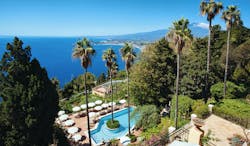
Hotel Villa Belvedere is a delightful 4-star hotel boutique hotel with enchanting views of Mount Etna and the sea. The beautiful gardens and idyllic terrace make it an ideal spot to relax and recuperate after exploring historic Taormina.
Double room with French balcony and sea view
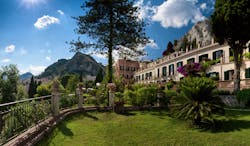
The Belmond Grand Hotel Timeo is a 5-star luxury hotel with spectacular island views. An iconic place to stay in Taormina. Excellent spa facilities, gourmet cuisine and proximity to Sicily's famous landmarks such as Mount Etna offer guests a tranquil and indulgent experience.
Classic double
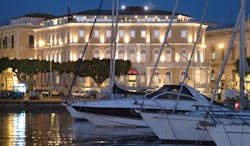
Grand Hotel Ortigia is a 5-star hotel in a splendid location on the ancient harbour front of Ortigia. The delicious cuisine and beautiful private beach afford guests a relaxing retreat after a day exploring the marvels of the city.
Classic double room

Eremo della Giubiliana is a 5-star deluxe, historic, boutique hotel in a beautiful natural location. The excellent local cuisine and indulgent spa facilities afford guests a truly relaxing experience, and a luxury taste of Sicily.
Classic double room
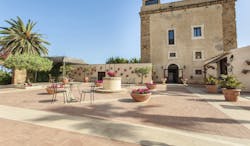
Hotel Baglio della Luna is an exclusive 4-star hotel with wonderful views over the Valley of the Temples. Delicious cuisine and tranquil gardens afford guests a relaxing and indulgent experience.
Classic double room
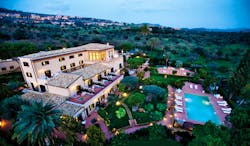
Villa Athena offers intimate 5-star luxury set amidst archaeological splendour. With unfettered views over the Valley of the Temples as well as the lush Sicilian countryside, gourmet cuisine, excellent spa facilities, it is an unmissable spot to relax and indulge.
Classic double room
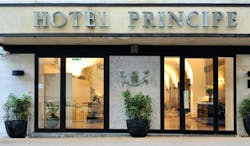
Hotel Principe di Villafranca is a 4-star boutique hotel in an excellent central location. The hotel features a variety of artwork and comfortable accommodation, and is a relaxing retreat from which to explore the ancient city of Palermo.
Classic double room
Thanks for organising what was a wonderful holiday. Apart from a delay because of Gatwick fog coming home, everything ran like clockwork and we had a cracking time. I would be happy to recommend Expressions and hope we will have the opportunity to organise another trip with you in the future.Mrs S, October 2024
Holiday price guide Prices from £2,830 per person based on two people sharing a double or twin room.
Holiday Code ITFD08
Call us on 01392 441245
Sicily luxury fly-drive tailor-made touring holiday
About Sicily
An Expressions tailor-made holiday in Sicily allows visitors to discover a unique and captivating island. The rich tapestry of Mediterranean history can be witnessed on the southerly island of Sicily, fascinating not only for its amazing blend of cultures including Greek, Arab, Byzantine and Norman and its architectural treasures which reflect these influences but also for its breath-taking scenery of coast, parched mountains and fertile groves of almonds, oranges, lemons and olives. The people are proud and independent, reserved but sincere and helpful. Traditions thrive to an extent that the atmosphere of Sicily is unrecognisable in the context of other parts of Italy further north. The towns and villages are contrasting with picture postcard scenes of mediaeval labyrinthine alleyways adorned by wrought-iron balconies and baskets of flowers or severe dilapidation punctuated by grand Baroque or austere Norman cathedrals and churches. Additionally, there are of course some of the most important sites of the ancient Greek world such as the temples at Agrigento, the theatre at Taormina and numerous relics at Siracusa, reputedly one of the most beautiful cities of the Greek world. High above the island looms Mount Etna, one of the largest volcanoes in the world and an awe-inspiring sight. Off the north coast of Sicily, the beautiful Aeolian Islands offer escape and remoteness, natural scenery and a startling light, a sleepy way of life and romantic isolation. A holiday in Sicily appeals for those who want typical rest and relaxation with cultural activities at hand, and for those who want to be more adventurous and experience more of this captivating island.
Highlights of Sicily
An ascent of Mount Etna, partly by car and then further on foot (guides available) through the luxuriant vegetation which includes oranges and lemons, bougainvillaea and poinsettias and then higher up the groves of walnuts, cherries, almonds, pistachios and vines. Palermo is known for its street markets, especially Vucciria and Ballaro, where traders and hawkers, pickpockets and shoppers converge amongst narrow streets and stalls of wares. See the traditional costumes and dialect of Piana degli Albanesi, where Albanians settled in the 15th Century. Revel in the splendid site of Taormina above the sea with views to Etna. Local crafts include cork, ceramics, honey, embroidery, raffia. Enjoy the calm and remoteness of the Aeolian Islands with their clear waters, beautiful scenery and peaceful way of life. Enjoy the gardens of the Villa Giulia in Palermo and the Public Gardens in Taormina.
Cultural highlights of Sicily
Palermo contains some of the greatest Arab-Norman buildings in existence - San Giovanni degli Eremiti, the Palazzo Reale with its striking Cappella Palatina and La Martorana. Monreale outside Palermo is the greatest work of Norman architecture in Sicily and contains beautiful 12th and 13th Century mosaics and cloisters. The Doric temples of the 5th Century BC in the Valley of the Temples in Agrigento. Cefalu has the `Portrait of a Man` by Antonello da Messina, dating from 1465 in its Museo Mandralisca.
Festivals in Sicily
Many Sicilian local festivals are linked to Saints’ Days. A few of the most well-known festivals generally include Carnival celebrations in Taormina and Acireale. Easter is celebrated especially in Trapani, Marsala and Piana degli Albanesi. Messina celebrates Ferragosto on the 15th August with a firework display over the Straits. The Sagra del Mandorlo in Fiore takes place in Agrigento in the first and second weeks of February to celebrate the almond blossom. Taormina Arte is a summer festival of music, cinema, ballet and theatre, held in the Greek theatre. The Palio dei Normanni takes place in Piazza Armeria in August.
Gastronomy in Sicily
The gastronomy of Sicily, like much of the culture of the island, has been heavily influenced by its history. Cuscus is a Sicilian version of couscous, and marzipan features heavily in sweets. Local produce includes citrus fruits, almonds, capers, olives, peppers and fish. Local specialities include Maccheroni con le sarde (pasta with sardines, fennel, raisins, pine nuts and saffron), Pesce spada (grilled sword fish), 'alla Siciliana' with capers, red peppers and herbs. Cassata is a popular dessert made with ricotta, candied fruit and pistachios and Cannoli are almond biscuits stuffed with ricotta. Sicily produces a variety of red and white wines including Corvo di Salaparuta and Etna, Marsala and Malvasia.

